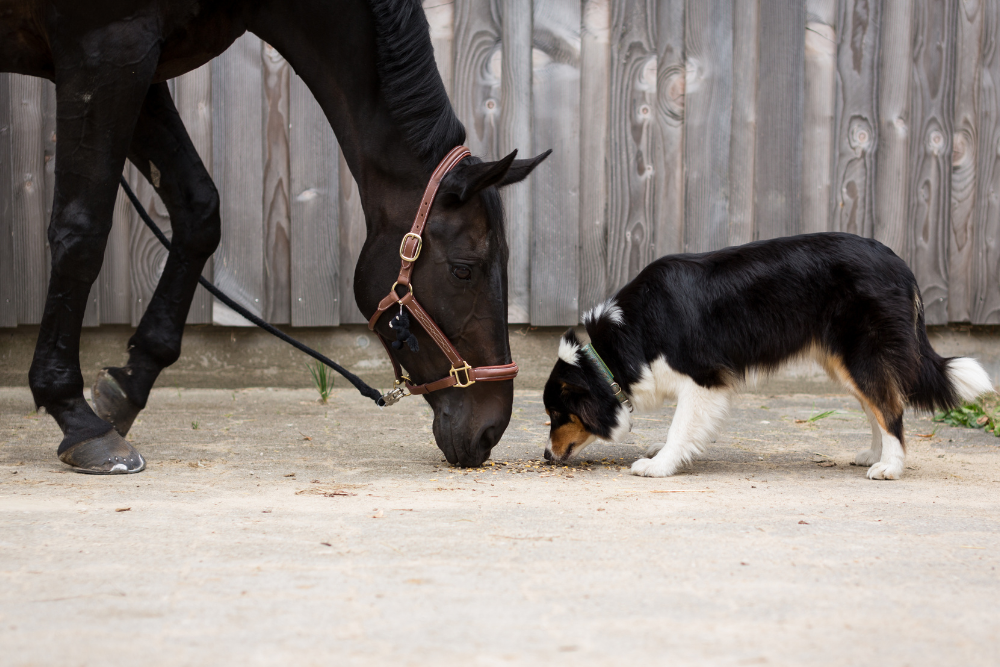Signs your dog is experiencing Discomfort
There are many changes, both behavioral and physical, indicating when a dog is experiencing discomfort. Learn how to recognize these signs of discomfort in your dog so you can prepare a treatment plan with your vet.
There are two types of pain experienced by dogs: acute and chronic. Injury, illness, or something that just happened causes acute pain. Things like arthritis, mobility issues, or dental diseases, which go on for a longer period, cause chronic pain.

Behavioral Changes
Because they may be experiencing discomfort, dogs tend to behave differently than they usually do. Of course, no two dogs are the same, but below are some behavioral changes that you might notice or that you should keep an eye out for:
Changes to Daily Habits
Dogs that are experiencing discomfort might have noticeable changes to their daily routine. Their sleeping habits might increase, possibly because they are trying to heal or because it might be hard for them to move around and be active. Your dog might not show interest in playing or other things they typically enjoy due to discomfort, inflammation, or lack of energy.
Being Vocal
Yelping, crying, whining, growling, howling, or snarling are some vocalizations that could be a sign of discomfort. Your dog may be experiencing pain and is trying to tell you something is wrong, especially if your dog is not usually vocal.
Excessive Licking or Grooming
Dogs will often attempt to soothe themselves when feeling discomfort, whether due to pain or, in some cases, anxiety. If you find that your dog is excessively licking, especially their paws, they may be trying to self-soothe. Dogs will instinctually lick wounds to clean and care for them. External wounds, such as cuts and scrapes, will be easy to identify, although sometimes the pain will be internal.
Agitation
A dog experiencing pain may not behave the way you are accustomed to. Both acute and chronic pain can cause your dog to behave aggressively or become easily agitated. If you notice your dog is avoiding contact, unusually aggressive, or even hiding and being generally antisocial, discomfort may be the underlying cause.
Shaking or Trembling
Although this could be a sign of coldness or old age, don’t immediately dismiss shaking or trembling, especially if it is unusual. Both shaking and trembling can be a sign of pain or a symptom of something more serious. For example, dogs who have swallowed large amounts of poisonous substances, such as chocolate, often suffer from muscle tremors.
Changes in Breathing Pattern
Both heavy panting and shallow breathing can be a sign your pup is experiencing discomfort. Panting is normal for dogs, but heavy panting, especially if they have not recently been outside or exercised, can be a cause for concern. Shallow breathing can sometimes indicate that it is difficult or painful to take a breath.
 Change in Appetite
Change in Appetite
Loss of appetite often indicates that something isn’t right. If there is difficulty with your dog eating, especially with dry food, it could point to dental pain as the underlying cause. Take notice of how much your dog is eating and drinking, especially if there is a concern that they are experiencing discomfort.
Mobility Changes
Limping
Limping and stiffness are two of the more obvious signs of discomfort. These two symptoms are commonly a result of arthritis, injury, or soreness. You may also notice that because of limping or stiffness, there may be a reduced interest in exercise or being active.
Not Wanting to Move or Walk
As discussed above, stiffness or general discomfort may lead to a change in mobility. If your dog is less active and showing signs of labored movement, or general disinterest in moving or walking, it could be a sign that they are in pain. This is especially true if they start having trouble lying down, getting up, jumping, or using the stairs. A lot of times, these signs are symptoms of other medical problems, so always make sure to take note of and discuss changes with your veterinarian.
Below are some, but not all, of the most common causes of discomfort and inflammation in dogs both chronic and acute:
- Bone or joint damage
- Sprains and/or strains
- Dental disease
- Ear and skin infections
- Surgeries
What you can do
As pet parents, we always want to do what we can to keep our dogs happy, healthy, and comfortable. If you think your dog is suffering from discomfort, there are many options to make them feel their best. Below are some steps you can take to help your furry friend.
Keep record of signs
Now that we discussed some common signs of discomfort, you will want to make sure that you keep a record of any unusual changes to your dog's behavior or routines. This will help you better advocate for your pet when you are at the vet, plus it gives your veterinarian a better understanding of the symptoms your dog is displaying. Making notes, taking photos or videos, and knowing what symptoms are displayed will help you and your vet understand what steps to take to resolve or minimize your dog's discomfort.
Make a vet appointment
The most important step is to make an appointment with your veterinarian so that you can figure out what the issue is. Depending on what the problem is, your vet may need to run tests, perform X-rays, or run blood tests. Once they pinpoint the problem, you can work with your vet on care and treatments.
Stop activity that has signs of stress
If you notice your dog displaying any of the above signs of discomfort while performing an activity, exercising, or playing, avoid it until you can speak to your vet. You will be able to discuss with your vet the steps you can take to modify the activity so that it is not as painful or to stop the activity altogether. When dealing with acute discomfort, you may temporarily adjust or stop strenuous activity, but with chronic conditions, the adjustment may be permanent.
CBD
Research with dogs shows the positive effects of CBD, especially for arthritis discomfort, anxiety, itchiness, and more. According to the American Kennel Club, a study found that dogs given CBD showed improvement in pain relief and quality of life. Other studies have shown the positive effects of CBD with relieving inflammatory issues, itchiness, anxiety, and many other ailments causing your dog discomfort.
CBD is known for its natural anti-inflammatory effects for both people and dogs. Your dog may need relief from swelling, discomfort, allergic reactions, or after minor surgery. CBD can also be a great alternative to manage mild or chronic discomfort due to daily exercise and joint stiffness.
PetFX Products for Managing Discomfort

We all want our pets to feel their best, and managing their discomfort can be difficult. At PetFX, we have specially formulated CBD supplements and infusions that are crafted to help your dog ease acute and chronic discomfort associated with discomfort and inflammation. Our patented products use premium ingredients and harness the proven power of hemp to provide your dog relief without drowsiness.
CannaLove® Discomfort Relief Hemp Infused Supplements feature a unique proprietary combination of Type-II collagen, Taurinol® taurine ester, ginger and yucca, working synergistically to help maintain your dog’s normal inflammatory response and immune-modulatory actions. Using this product can aid your pet in sustaining long-term health, helping your treasured dog live a normal and comfortable life.
Continuous use of CannaLove® Discomfort Relief Hemp Infused Supplement Sticks may:
- Help Relieve Inflammation Associated With Normal Daily Exercise And Activity
- Support A Healthy Inflammatory Response
- Optimum Blend To Enhance The Body’s Normal Repair Of Connective Tissues And Joints
Our Discomfort Relief also comes in an infusion, an excellent option to boost your dog's wellness and provide fast relief. Our CBD Soft Chews and CannaHearts® help dogs cope with the discomfort associated with joint stiffness and daily exercise and activity. CBD Soft Chews and CannaHearts® promote a sense of relaxation and mental alertness while reducing inflammation and stiffness.
Our CBD products provide your dog with the naturally occurring complex of cannabinoids found in hemp, which may provide the entourage effect required to support proper cannabinoid intake. They deliver 2.5 mg of CBD dosage from broad-spectrum hemp (containing less than 0.3% THC) and will not affect your dog psychologically. Adding a CBD-infused supplement to your dog’s daily routine may help maintain your dog’s comfort and youthful exuberance.
Conclusion
Experiencing discomfort is normal during a dog's lifetime; as a pet parent, it is your responsibility to notice and respond appropriately to your dog when they are displaying symptoms of discomfort. Always keep a detailed record of changes in your dog, both externally and behaviorally, and discuss them with your veterinarian. Adjusting your routine to accommodate your dog's condition and adding CBD or other hemp-infused supplements may help relieve symptoms of discomfort and help your dog feel their very best.



